Hill House Comics
 With the support of the publisher, Shelf Awareness celebrates the launch of Hill House Comics, the new line of Horror Graphic Novels from DC curated by Joe Hill.
With the support of the publisher, Shelf Awareness celebrates the launch of Hill House Comics, the new line of Horror Graphic Novels from DC curated by Joe Hill.
 With the support of the publisher, Shelf Awareness celebrates the launch of Hill House Comics, the new line of Horror Graphic Novels from DC curated by Joe Hill.
With the support of the publisher, Shelf Awareness celebrates the launch of Hill House Comics, the new line of Horror Graphic Novels from DC curated by Joe Hill.
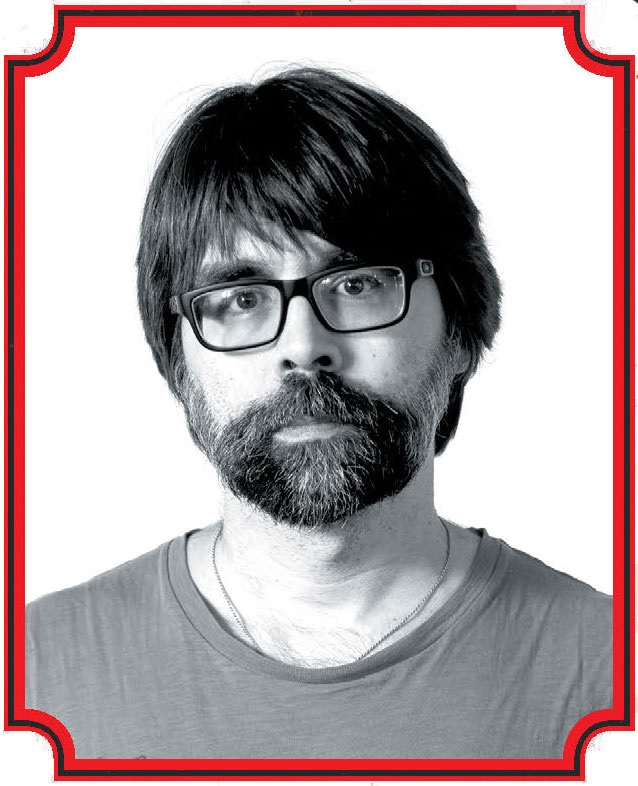 |
|
| Joe Hill | |
DC's Hill House Comics is a new line of original, cutting-edge horror graphic novels that is being curated by horror writer Joe Hill, who is also the author of two of the first five titles from the imprint. With works by some of the biggest names in horror storytelling, Hill House Comics aims to terrify readers with a smart, subversive and scary lineup, each with a slightly different flavor of horror.
Joe Hill, of course, is the author of many bestselling horror titles. including The Fireman and Heart-Shaped Box; Horns, which was made into a feature film starring Daniel Radcliffe; NOS4A2, which is a forthcoming TV series from AMC; the story collection 20th Century Ghosts, winner of the Bram Stoker Award and British Fantasy Award for Best Collection; and Strange Weather, a collection of novellas, published three years ago. His long-running comic book series Locke & Key, featuring the art of Gabriel Rodriguez, won him the Eisner Award for Best Writer.
The first five titles (details below) begin appearing next week: Basketful of Heads written by Joe Hill and art by Leomacs will be published on Tuesday, September 8. The Low, Low Woods appears on September 29 and is written by Carmen Maria Machado, with art by Dani. The Dollhouse Family written by Mike Carey with art by Peter Gross will be published on October 13. Daphne Byrne, written by Laura Marks with art by Kelley Jones, appears November 3. And Plunge, written by Joe Hill with art by Stuart Immonen, will be published November 17.
The idea for Hill House Comics goes back at least to 2016 when Joe Hill and Mark Doyle began talking about "me taking a dip in the Sandman Universe," Joe Hill says. "Eventually, though, we started talking about how the last few years have represented a kind of golden age for horror. Every year brings a new wave of smart, expertly crafted films in the genre, like It Follows and Get Out; the streaming channels are having a horror gold rush with shows like Lovecraft Country and The Haunting of Hill House; a new generation of brilliant horror writers (most of them women) are making scare with shockers like Sarah Pinborough's Behind Your Eyes and Catriona Ward's forthcoming The Last House on Needless Street. I wanted comics to get into the action and Mark said why not?"
Asked about elements the first five Hill House Comics graphic novels share, Joe Hill says, "This was something all of us talked about: taking these very different stories and finding little ways to bind them together. On a visual level, there's a shared color palette, which I sometimes describe as 'three drops of blood stirred into cream.'
"On the level of narrative, I've foisted my almost certainly ridiculous ideas about story math on all the writers. They miiiiiight also be shared universe? Certainly there are narrative connections between some of these tales, although I've sworn not to give away any details."
To say Joe Hill has enjoyed working on Hill House Comics is an understatement. "There were a lot of highs," he says. "I don't know that I could just pick one. Reading the script for Carmen Maria Machado's first chapter of The Low, Low Woods, which was like drinking a perfectly made old fashioned. The page where Daphne Byrne literally feeds a predator his own hand. A masterfully grotesque image, dreamt up by Laura Marks, and executed with a delicious lack of restraint by Kelley Jones. Leomac's light touch with a character moment, his ability to find a comic tenderness in a woman lifting a supernaturally animated severed head and wiping away the snot under his nose. M.R. Carey's calm, disciplined mastery. Every time Stuart turned in a new page. The way David Stewart colors a shaft of light falling through a murky cloudscape. Oh, oh, oh! And we did a back-up feature about werewolves winning the revolutionary war. For some reason every single page artist Dan McDaid turned in made me laugh, especially when he began flinging around the gore. I can't explain it. The dude just made me cry with laughter."
Joe Hill hopes that booksellers and librarians understand their key role in the comic book world, saying, "It's more important than ever that booksellers and librarians pick up the banner for comic books--the artform has never needed their support more. The vast majority of comic lovers never set foot in a comic shop! They discover their next favorite read at the library or their local indie bookstore. Think of the graphic novel section as the punk rock section in a record store. For a certain kind of reader, graphic novels are a shot of adrenaline mixed with a shooter of validation... they're confirmation that it's okay to have a head whirling with ideas about horror movies and superheroes and the permeability of reality.
"As for the Hill House imprint, these are good stories for people who love Stranger Things and Sandman, who want a rush in the dark that ends with a scream and a shout of laughter."
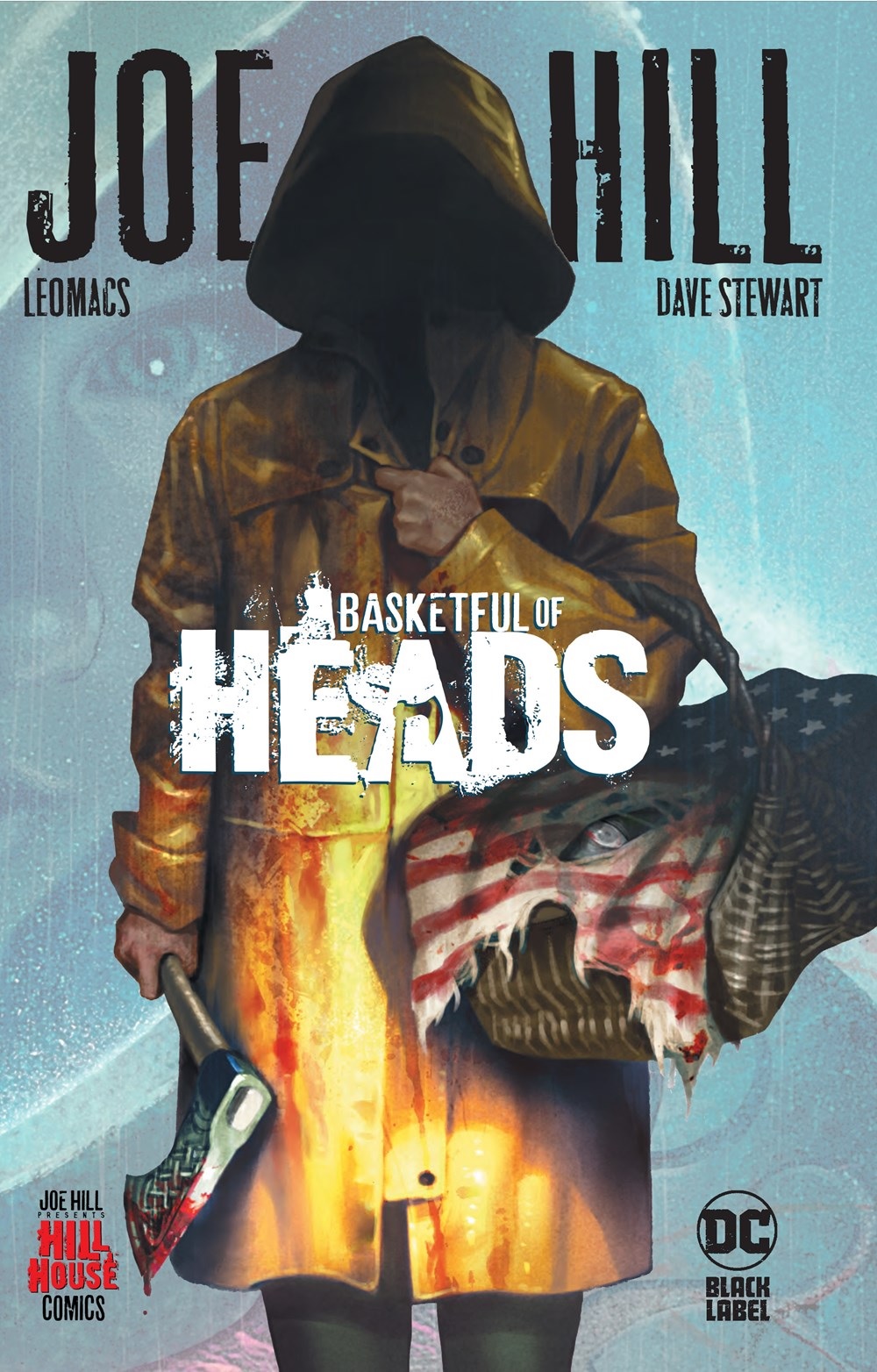 Basketful of Heads. Written by Joe Hill, art by Leomacs, covers by Reiko Murakami ($24.99, 9781779502971, September 8).
Basketful of Heads. Written by Joe Hill, art by Leomacs, covers by Reiko Murakami ($24.99, 9781779502971, September 8).
Basketful of Heads begins with a pleasant premise: it's 1983, and June Branch goes to Brody Island to visit her boyfriend, Liam, for a relaxing last weekend of summer. But an escaped group of criminals breaks into the house that June and Liam are watching, and they take Liam away. During the attack, June grabs a strange Viking axe and flees. When one of the attackers finds her, she swings the axe and takes off his head, which rolls away and begins to babble in terror. For June to uncover the truth, she needs to hear the facts straight from the mouths of her attackers, with... or without their bodies attached.
Joe Hill says he wanted this first Hill House Comics title "to be insane, WTF, relentless reading: to script something that would blast along like an 18-wheeler going downhill with no brakes. These days, there's so much entertainment out there, there's so much distraction--if you want to cut through the noise, you've got to come out with both guns blazing. You have to do your best to deliver something that'll keep the reader flying through the pages."
He adds that it was fun writing Basketful of Heads "probably because I so like spending time with June," the main character. "She's bright and sunny and open--someone we can love, someone we can root for--who also happens to be as flexible and sharp as a fencing blade. Her beloved, Liam Ellsworth, is snatched away by a gang of desperate men, for reasons she doesn't understand. She finds herself pursuing them with an eerie, occult axe and her own unique understanding of human nature. I won't say which I think is the more valuable asset."
He's also enjoyed working with artist Leomacs, who understands that "even though this is a dark, suspenseful story, we're also setting out to have some good, gory, stomach-turning fun. He brings an anarchic, subversive energy to every panel. It's everything I was hoping for, and then some. I really wanted to tell a tale that was tense, funny, and unrepentantly grotesque--think of pictures like Re-Animator and Evil Dead 2. 'Tense, funny, and unrepentantly grotesque' is Leomacs's sweet spot."
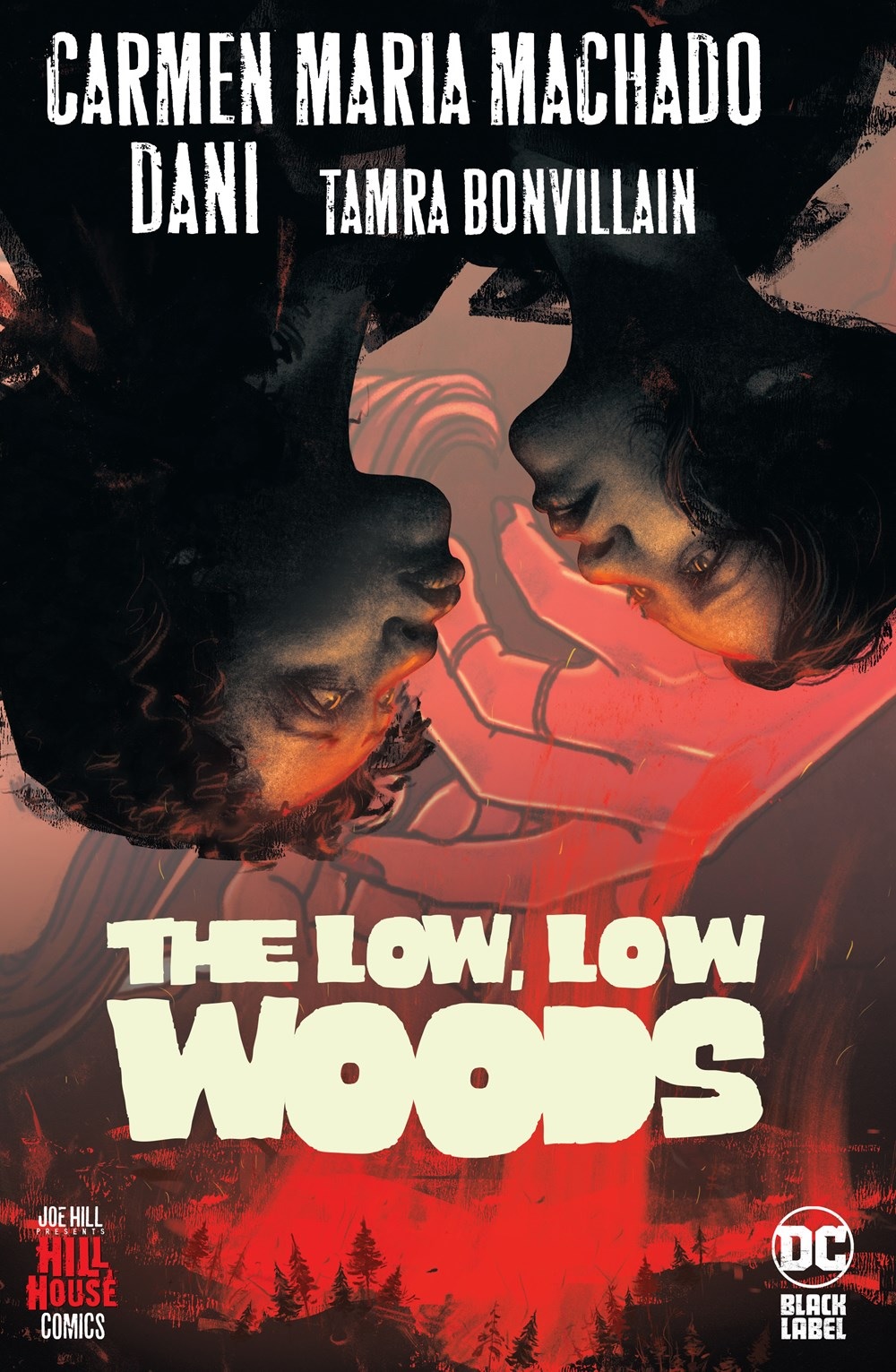 The Low, Low Woods. Written by Carmen Maria Machado, art by Dani, covers by Sam Wolfe Connelly and J.A.W. Cooper ($24.99, 9781779504524, September 29).
The Low, Low Woods. Written by Carmen Maria Machado, art by Dani, covers by Sam Wolfe Connelly and J.A.W. Cooper ($24.99, 9781779504524, September 29).
Shudder-to-Think, Pennsylvania, is plagued by a mysterious illness that eats away at the memories of those affected by it. El and Octavia are best friends who find themselves the newest victims of this disease after waking up in a movie theater with no memory of the past few hours. As El and Vee dive deeper into the mystery behind their lost memories, they realize the stories of their town hold more dark truth than they could've imagined and that no one around them is entirely what they seem, except perhaps for the Skinless Men in the deep woods and the Deer Woman who appears by moonlight... It's up to El and Vee to keep their town from falling apart and keep the world safe from Shudder-to-Think's monsters.
Carmen Maria Machado calls The Low, Low Woods "Pennsylvania Gothic, body horror, environmental horror. There a lot of different sub-genres going on." The book, she continues, features two striking young women. "I wanted them to be women of color, I wanted them to be queer, and I wanted them to be the kind of people with whom we'd be really interested in exploring this world," she says. "So you have El, who is a reader, and a writer--they're both sort of dirtbag teens, but she’s especially a dirtbag teen. Just being herself, but also has a lot of questions, and is trying to aggressively pursue answers to the various mysteries of the place where they live. Octavia is very cool and analytical, and is interested in certain mysteries, but there are others that she wants to leave behind, because she just wants to get out of town. They have a different energy, and it was important to me to have that conflict. In many ways they're compatible and similar, which makes sense because they're good friends who really love each other, but also there is this tension between them, about what to do about certain elements of the story."
The Low, Low Woods is the first graphic novel Machado has written, and she found that perspective was different in this medium compared to her other work. "In fiction, you tell stories with perspective, but in this, I could have a person talking, and a voice narrating, and a visual perspective. It's way more complicated, but it also creates a lot more space for the tension of horror--visually, it gives you even more stuff to think about."
Working with artist Dani has been "amazing," Machado says. "I can't draw to save my life, so watching her transform my imagination into these physical images has been really, really incredible."
She also has enjoyed working with Joe Hill. "Joe is not only brilliant in writing comics, but also he's a lovely, kind, generous human, who just gives really good writing advice. I've been overjoyed to have him as a part of this process, because he's done a lot for me, and gotten me to think in different ways about what I'm doing. I'm really grateful to him."
Machado is the author of the memoir In the Dream House and the short story collection Her Body and Other Parties. She was a finalist for the National Book Award and winner of the Bard Fiction Prize, the Lambda Literary Award for Literature Fiction, the Lambda Literary Award for LGBTQ Nonfiction, the Brooklyn Public Library Literature Prize, the Shirley Jackson Award, and the National Book Critics' Circle's John Leonard Prize. Her essays, fiction, and criticism have appeared in the New Yorker, the New York Times, Granta, Vogue, This American Life, Harper's Bazaar, Tin House, McSweeney's Quarterly Concern, The Believer, Guernica, Best American Science Fiction & Fantasy, Best American Nonrequired Reading, and elsewhere.
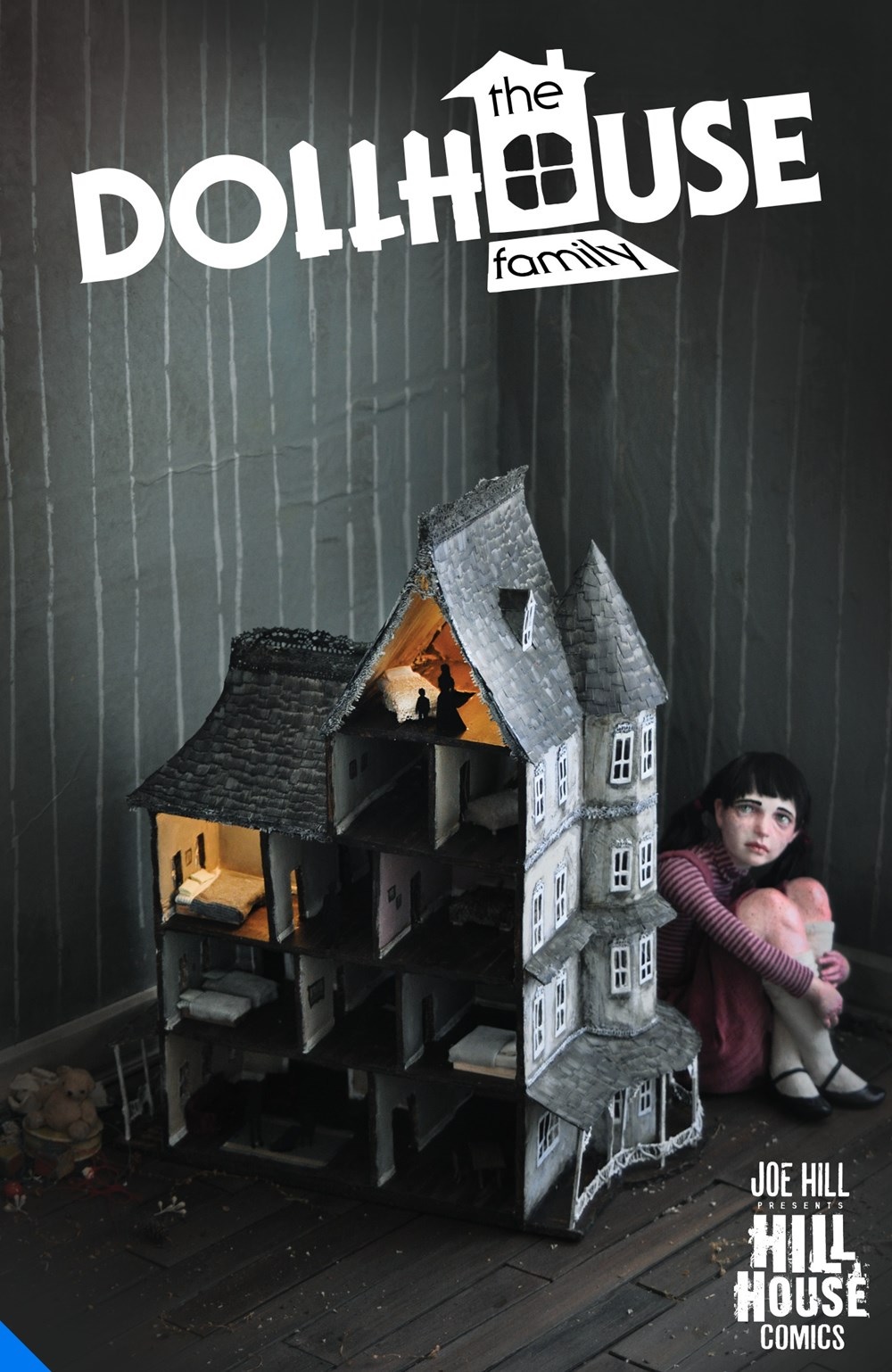 The Dollhouse Family. Written by Mike Carey, art by Peter Gross, covers by Jessica Dalva ($24.99, 9781779504647, October 13).
The Dollhouse Family. Written by Mike Carey, art by Peter Gross, covers by Jessica Dalva ($24.99, 9781779504647, October 13).
When Alice is six, she is given a beautiful antique dollhouse. When things in her life get scary, Alice turns to her dolls and dollhouse for comfort. One day, they invite her to come play inside with them. As Alice's life is turned upside down in the "big" world, she is always welcomed home to the little world inside the dollhouse; the house will even grant her a wish if she agrees to live with them.... Follow Alice through the door of the dollhouse and into the demon's den.
Mike Carey says, "Dolls have human form, human features, but their immobile faces turn even the warmest of smiles into an unsettling rictus. And, you know, their eyes don't close. They're watching you while you sleep."
Mike Carey is a comics writer and novelist, whose big break came when, during its seven-year run, he wrote Lucifer, a spinoff from Neil Gaiman's Sandman series. During that period, Carey was nominated for four Eisner awards and won the Ninth Art and UK National Comics awards. More recently he has written Barbarella (Dynamite) and Highest House (IDW).
Carey is also the author of the Felix Castor novels, supernatural crime thrillers, and two collaborations with his wife, Linda, and their daughter, Louise: The City of Silk and Steel and The House of War and Witness. As M.R. Carey, he wrote The Girl With All the Gifts and its prequel The Boy on the Bridge. He also wrote the screenplay for the movie adaptation of The Girl With All the Gifts, for which he received a British Screenwriting Award. His latest novel, The Book of Koli, is the start of a post-apocalyptic trilogy; the remaining books will be published this month and in April 2021.
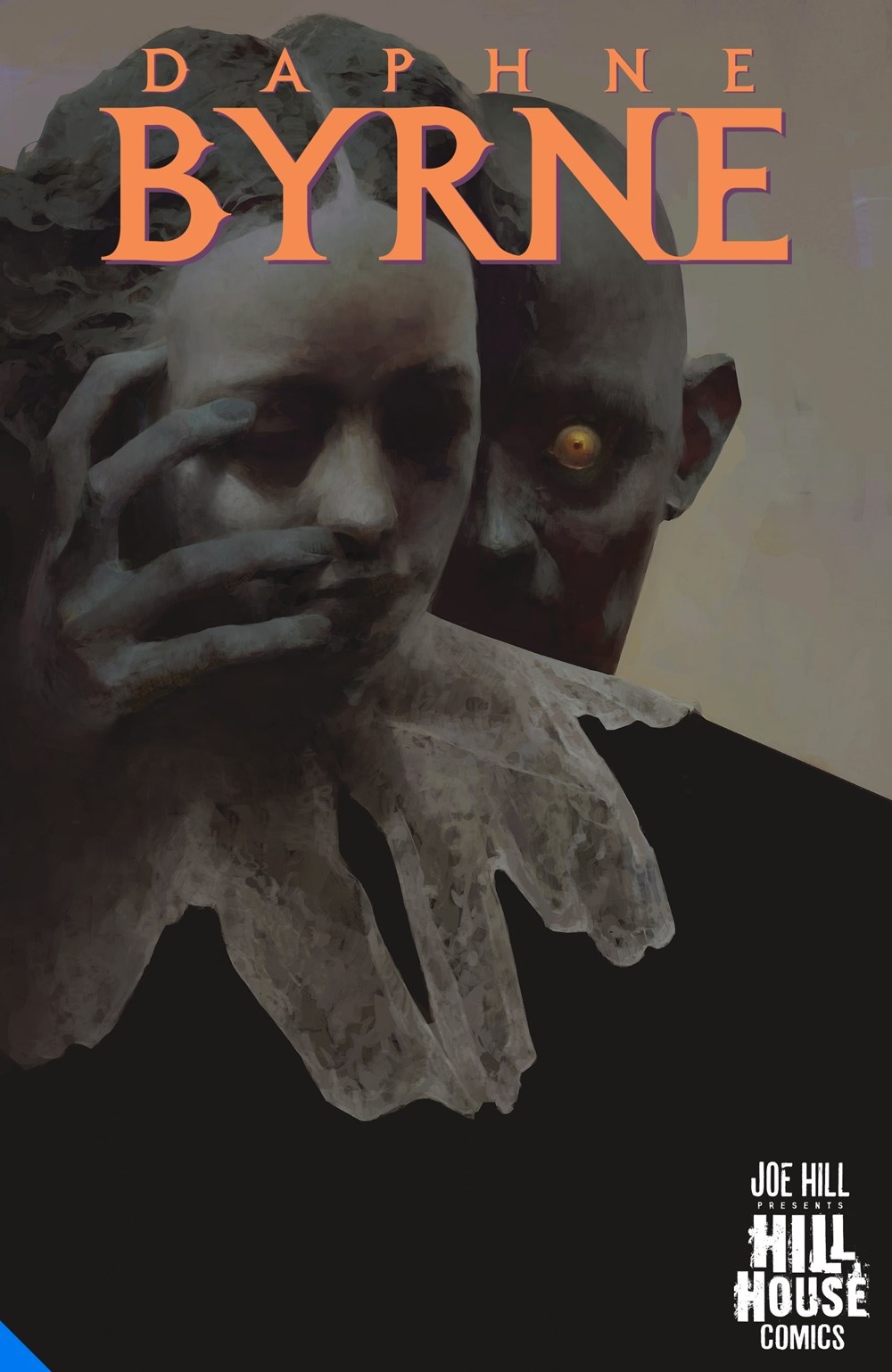 Daphne Byrne. Written by Laura Marks, art by Kelley Jones, covers by Piotr Jablonski ($24.99, 9781779504654, November 13).
Daphne Byrne. Written by Laura Marks, art by Kelley Jones, covers by Piotr Jablonski ($24.99, 9781779504654, November 13).
It's 1890s New York, and after the death of Daphne Byrne's father, her mother is drawn to a spiritualist group that claims to speak to the dead. Daphne sees through their act right away, but something from the other side sees her too, and soon "Brother" offers support and encourages Daphne to stand up for herself--and to use the powers he has too.
Laura Marks says, "What's a young girl supposed to do when a charming demon invades her mind and eats her soul?"
Laura Marks writes for TV and the theater in addition to comics. For TV, she has written episodes of The Good Fight (CBS All Access), The Expanse (Amazon), Ray Donovan (Showtime), The Exorcist (Fox), Braindead (CBS) and the Hulu adaptation of Joe Hill's Locke & Key. Her stage play Bethany was produced off-Broadway starring America Ferrera and became a New York Times Critic's Pick and received a Lucille Lortel nomination for Best Play. Her play Mine, a dark thriller, premiered at the Gift Theatre in Chicago. Other playwriting honors include the PEN/Laura Pels Theater Award, a Lilly Award and an award from the Fellowship of Southern Writers.
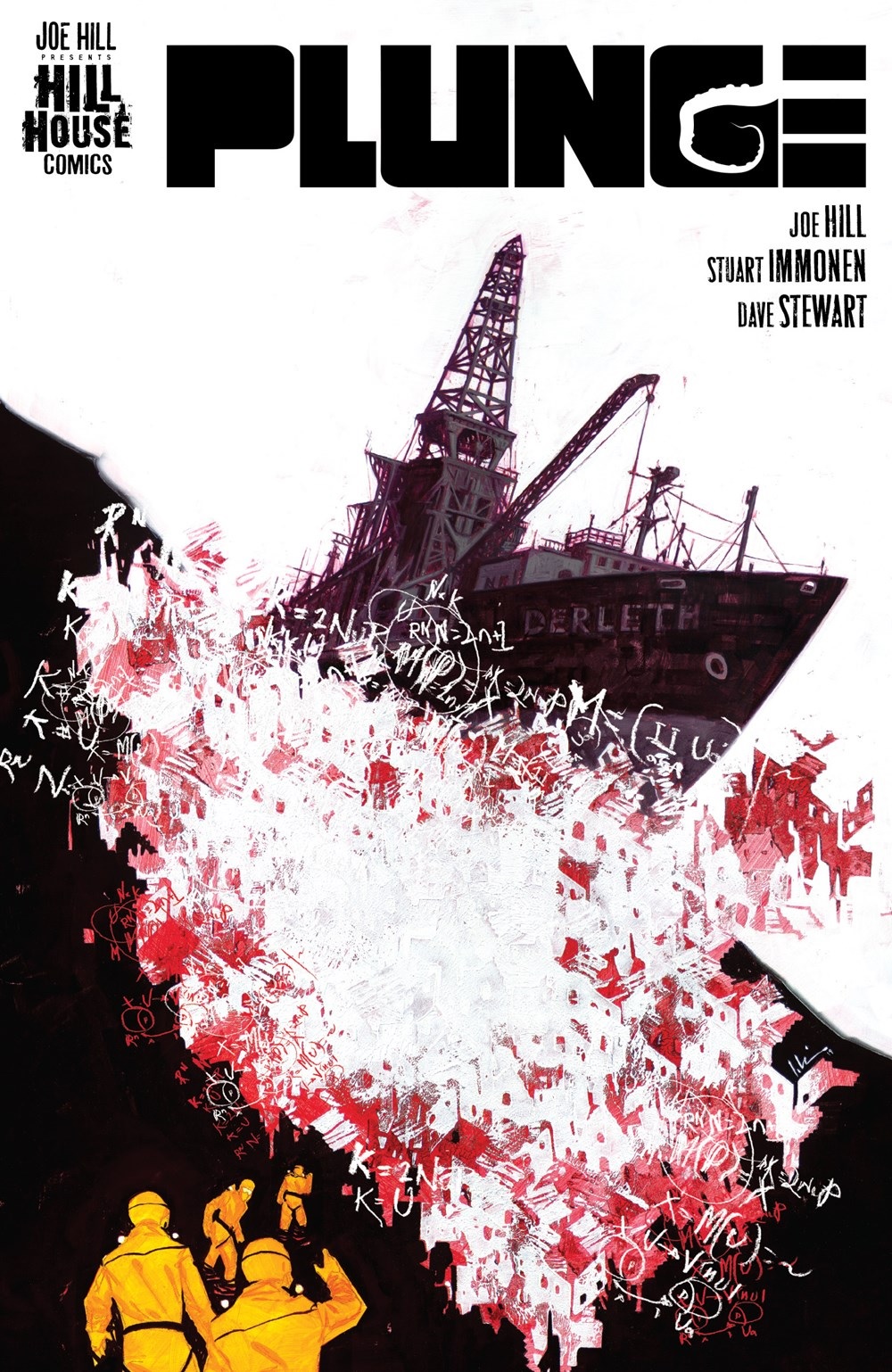 Plunge. Written by Joe Hill, art by Stuart Immonen, covers by Jeremy Wilson ($24.99, 9781779506887, November 17).
Plunge. Written by Joe Hill, art by Stuart Immonen, covers by Jeremy Wilson ($24.99, 9781779506887, November 17).
A distress signal goes out from a research ship that disappeared in the Arctic more than 40 years ago. The Carpenter Salvage team, accompanied by a Marine Biologist eager to retrieve lost data and a company man looking to protect information and assets, are sent to recover what remains of the Derleth. But when they arrive and begin exploration of the ship and the island it crashed next to, they make discoveries more menacing than they could've ever expected.
There's something deep down in the icy darkness of the Arctic sea, something that doesn't want to be found. There's also something else terrifying: the long-lost crew of the Derleth emerges from caves. They seem as though they haven't aged a day--it's as if they're exactly the same as the day they disappeared except they're all missing their eyes. And they're capable of feats of unbelievable mathematics. And then a storm closes in.
Will the salvage crew survive to bring their findings to shore? What danger waits for them if they fail? What dangers await us all should they succeed? Plunge tempts readers to explore the wreckage and discover where ghost stories start.
Joe Hill says that in Plunge, "We're going for something that has the feel of a certain kind of '80s sci-fi/horror: think of The Thing or James Cameron's Aliens. You've got a team of tough, affable, resilient professionals who are used to dealing with trouble but who find themselves backed into a corner by something far beyond their experience, a chilling and otherworldly adversary. We want to build up that sense of claustrophobic danger and overwhelming menace, but we also want the reader to laugh with, root for, and care about the Carpenter brothers and Moriah Lamb."
The setting is also important, Joe Hill says: "The icy fathoms of the Arctic remain one of the least well-known places on Earth, and as H.P. Lovecraft noted, our fear of the unknown is the greatest fear of all."
Joe Hill added that artist Stuart Immonen was the perfect partner: "Stuart's ability to bring out the subtleties of character--in body language, in expression, in the tilt of the head--is second to none. His people feel real and relatable. In horror, identifying with the characters and coming to care about them is everything. Otherwise the scares just don't scare."